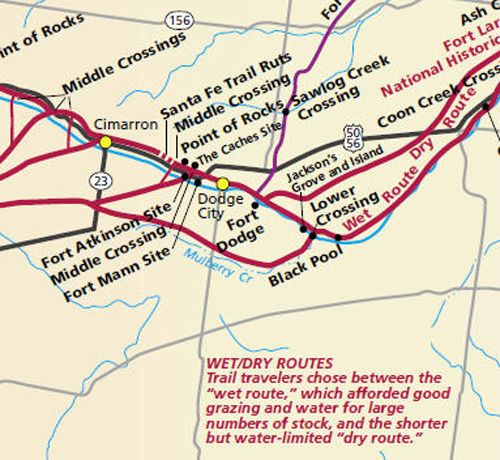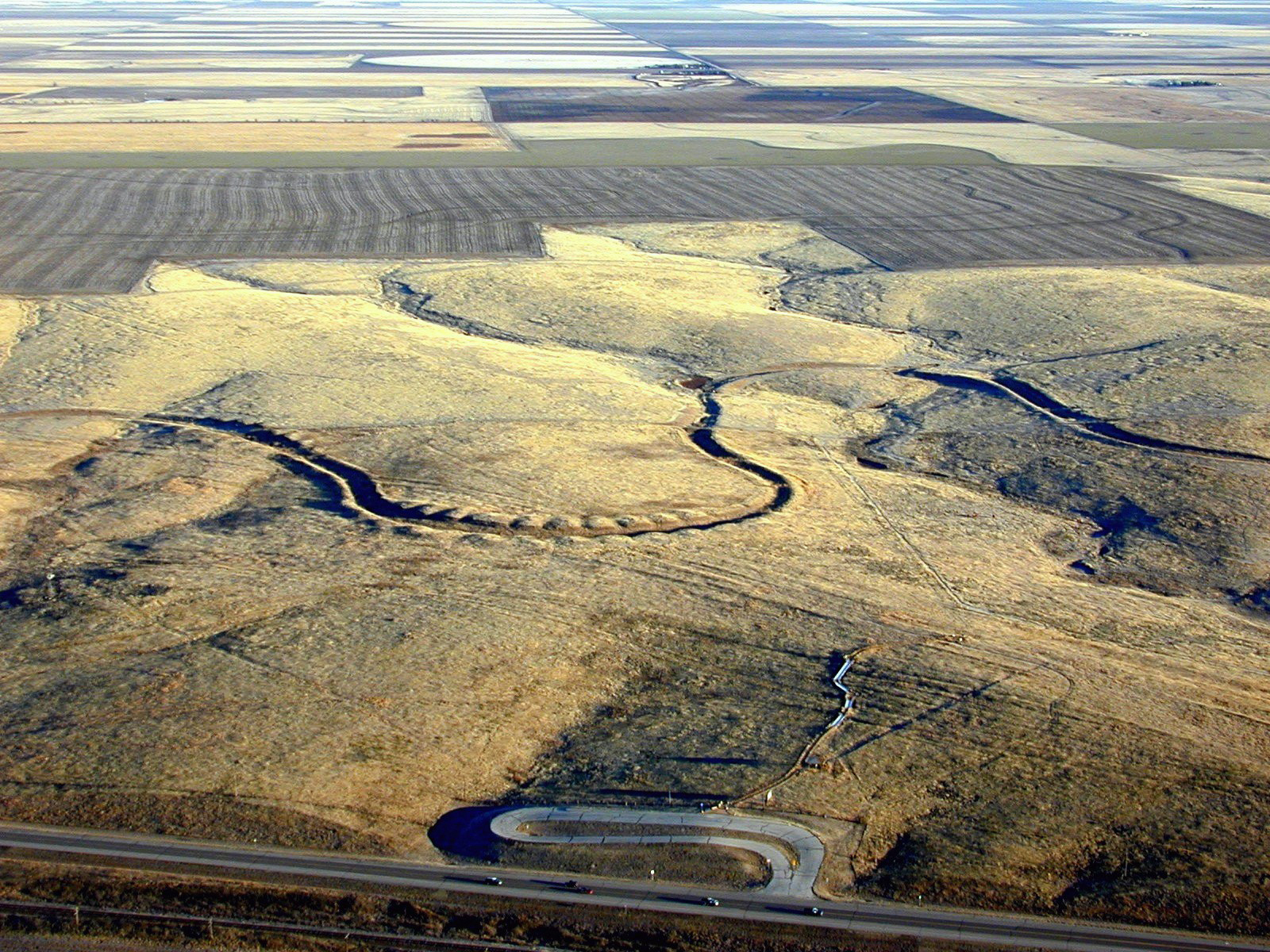
Ford County: Where the Dust of Empire Met the Whisper of the Prairies
Dodge City, Kansas – The wind across the high plains of Ford County carries more than just the scent of prairie grass; it whispers tales of ambition, hardship, and the forging of a nation. This seemingly unassuming stretch of central Kansas, bisected by the languid Arkansas River, served as a crucial crucible in the grand saga of the American West – a vital, often perilous, corridor along the legendary Santa Fe Trail. Here, the raw, untamed frontier gave way to the clamor of commerce, the clash of cultures, and the birth of legends that still resonate today.
From the moment William Becknell blazed the trail in 1821, connecting Franklin, Missouri, with Santa Fe, New Mexico, the Santa Fe Trail became more than just a path; it was a lifeline. A artery of trade pumping goods, ideas, and people across 900 miles of often unforgiving terrain. And at its very heart, geographically and strategically, lay what would become Ford County.
The Wet Route and a River’s Embrace

For much of its existence, the Santa Fe Trail offered two primary routes: the Cimarron Cutoff, a shorter but notoriously dry and dangerous path, and the Mountain Route, longer but offering more reliable water. However, the most consistent and often preferred path through what is now Ford County was an integral part of the "Wet Route," following the north bank of the Arkansas River. This river, though often shallow, was a life-giver. It provided water for thirsty travelers, their livestock, and a natural guidepost across the vast, featureless plains.
The decision to hug the Arkansas was born of necessity. The trail’s chronicler, Josiah Gregg, whose seminal work "Commerce of the Prairies" documented the trail’s early years, often recounted the anxieties of water scarcity. "The dread of thirst," he wrote, "often causes as much suffering as the reality." For weeks, wagons laden with textiles, tools, and trinkets would rumble westward, their oxen and mules plodding through the dust, their drivers scanning the horizon for the tell-tale green ribbon of trees marking the Arkansas.
Ford County, therefore, became a critical series of waypoints, where river crossings, buffalo hunts, and the constant threat of Native American encounters defined daily life. The trail was a conduit for goods, but also for conflict. Indigenous tribes – the Comanche, Arapaho, and Cheyenne – viewed the increasing encroachment of American traders and settlers as a threat to their hunting grounds and way of life. Raids on wagon trains, often in retaliation for broken treaties or the slaughter of buffalo, were a constant danger, making armed escort and vigilance paramount.
Fort Dodge: A Bastion on the Plains
The escalating tensions and the sheer volume of traffic necessitated a military presence. In 1865, Fort Dodge was established on the north bank of the Arkansas River, approximately five miles southeast of present-day Dodge City. Named for General Grenville M. Dodge, a prominent railroad builder and Union Army officer, the fort quickly became a linchpin of the trail’s security.
"Fort Dodge was more than just a military outpost; it was a beacon," explains Dr. Sarah Jenkins, a Kansas history professor. "It provided protection against raids, offered vital supplies for weary travelers, and served as a communication hub for the vast territory. Without it, the flow of commerce and westward expansion would have been significantly hampered, if not impossible."
The fort’s strategic location meant it was a regular stop for traders, freighters, and government supply trains. It boasted a hospital, a blacksmith shop, stables, and barracks, transforming a desolate stretch of prairie into a bustling, if rugged, community. Soldiers stationed there faced not only the threat of conflict but also the relentless challenges of the frontier: harsh weather, disease, and the isolation of vast distances. The establishment of Fort Dodge solidified Ford County’s role as a nexus of military and commercial activity, laying the groundwork for the remarkable town that would soon emerge.
Dodge City: The Queen of the Cow Towns

While the Santa Fe Trail brought the first waves of commerce to Ford County, it was the arrival of the Atchison, Topeka & Santa Fe Railway in 1872 that truly sparked the explosion of Dodge City. Built just a few miles west of Fort Dodge, the railroad transformed the sleepy confluence of trail and river into a booming, often lawless, "Queen of the Cow Towns."
The railroad provided a rapid transit route for cattle from Texas, which had previously been driven north along the Chisholm and Western Trails to other railheads. When the Santa Fe line reached Dodge City, it became the primary destination for these epic cattle drives. Thousands upon thousands of longhorns, dusty and weary, were driven into the pens of Dodge City, destined for eastern markets.
"Dodge City in its heyday was an astonishing place," notes local historian Mark Peterson. "It wasn’t just about cattle; it was about the convergence of different worlds. You had trail drivers, buffalo hunters, soldiers from the fort, railroad workers, gamblers, prostitutes, and legitimate businessmen all vying for space and opportunity. The Santa Fe Trail had laid the groundwork, creating a known route and a reason for people to be here. The railroad simply supercharged that existing energy."
The town earned a notorious reputation as "the wickedest little city in America," a moniker it wore with a certain pride. Its streets, often ankle-deep in mud or dust, witnessed gunfights, poker games, and raucous saloons operating around the clock. Legendary lawmen like Wyatt Earp, Bat Masterson, and Doc Holliday walked its streets, attempting to impose order on a population often fueled by whiskey and a frontier mentality.
One particularly vivid example of Dodge City’s frontier justice was the "deadline," an unofficial boundary established along the railroad tracks. West of the tracks, the law was looser, catering to the boisterous cowboys. East of the tracks, more respectable businesses and families tried to maintain a semblance of order. Crossing that line often meant crossing into trouble.
Though the Santa Fe Trail itself was beginning to wane in importance with the rise of the railroad, its spirit of rugged individualism, daring commerce, and relentless westward push lived on in Dodge City. The town became a powerful symbol of the American frontier, a place where fortunes were made and lost, and where legends were born from the dust and grit of everyday life.
The Trail’s Twilight and Enduring Legacy
By the 1880s, the golden age of the Santa Fe Trail as a major freighting artery had largely ended. The railroad, the very engine that had propelled Dodge City to fame, ultimately rendered the arduous wagon journeys obsolete. What took weeks by wagon could now be accomplished in days by train, more safely and efficiently. The great cattle drives also faded as barbed wire fences enclosed the open range, and smaller, local rail lines spread across Texas.
Yet, the legacy of the Santa Fe Trail in Ford County, and across the West, is far from forgotten. Its imprint is etched not only in the historical records but also in the very landscape. Swathes of prairie in Ford County still bear the faint but discernible ruts of countless wagon wheels – deep grooves worn into the earth by the passage of oxen, mules, and men over decades. These "swales," as they are known, are tangible reminders of the immense scale of traffic and the incredible effort required to traverse this land.
Today, the Santa Fe National Historic Trail, designated by Congress, helps preserve and interpret these hallowed grounds. Visitors to Ford County can explore interpretive sites, walk along sections of the original trail, and visit museums that tell the story of this epic journey. The Fort Dodge Museum and Library, located on the grounds of the former fort, offers a fascinating glimpse into military life on the frontier. And, of course, Dodge City embraces its Wild West heritage, with attractions like Boot Hill Museum bringing to life the era of cowboys, gunfighters, and dance halls.
The spirit of the Santa Fe Trail in Ford County is one of resilience, ambition, and the relentless pursuit of opportunity. It’s a story of how a river, a trail, and eventually a railroad, converged to create a vibrant, often chaotic, hub of activity that helped shape the American identity. From the creaking of ox-drawn wagons to the thunder of longhorn hooves, from the disciplined routines of soldiers to the wild abandon of cowboys, Ford County bore witness to the raw, unfiltered drama of the American frontier.
As the sun sets over the Kansas plains, casting long shadows across the ancient ruts, one can almost hear the echoes of the past: the crack of a bullwhip, the distant lowing of cattle, the mournful cry of a coyote. These are the sounds of a history that refuses to be silenced, a testament to the enduring power of the Santa Fe Trail and its indelible mark on Ford County, Kansas. It remains a place where the dust of empire truly met the whisper of the prairies, leaving behind a rich tapestry of stories for generations to come.


